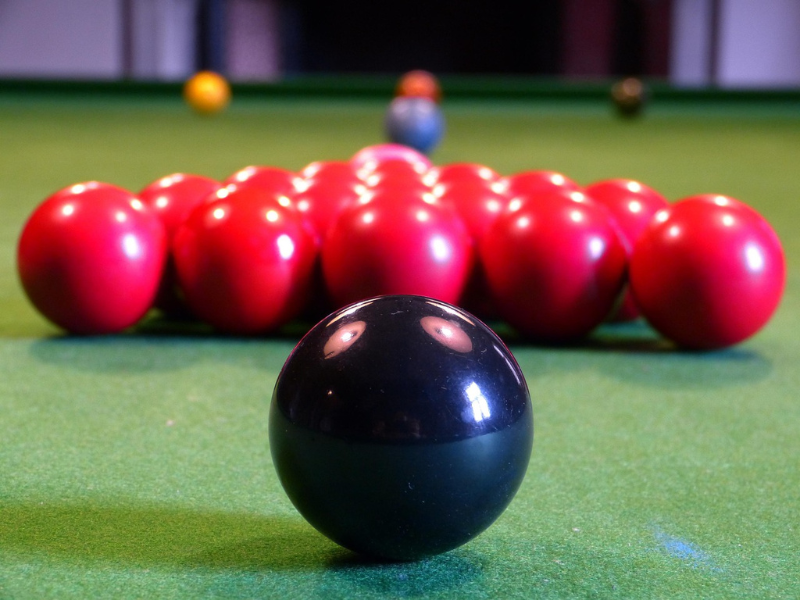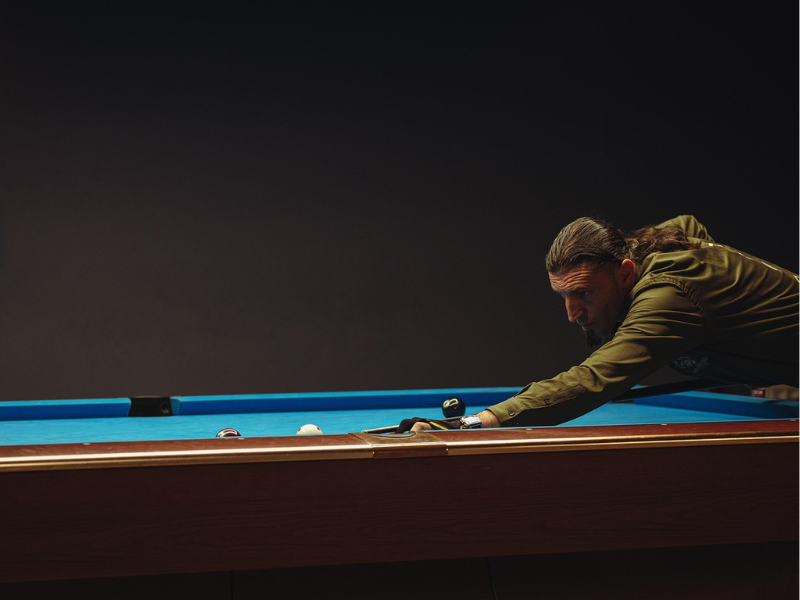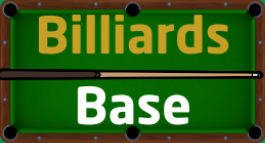The break-off shot in snooker sets the tone for every frame, making it one of the most crucial skills for players to master. Unlike the dramatic power breaks seen in pool games, the snooker break-off is typically a tactical shot that prioritizes safety and control over spectacular ball scattering. A well-executed break can immediately put pressure on your opponent, while a poor break often hands them an early advantage.
For amateur players developing their game, understanding break-off fundamentals builds confidence and establishes good habits from the start of each frame. Competitive players know that consistent, strategic break-offs can be the difference between winning and losing close matches. The break-off is your first opportunity to impose your will on the frame and demonstrate control.
Let’s walk through every aspect of the snooker break-off, from basic rules and positioning to advanced tactical considerations. Whether you’re playing your first frame or looking to refine an existing technique, these step-by-step instructions will help you develop a reliable, effective break-off shot that serves your overall game strategy.
What is a Snooker Break?

The break-off in snooker refers specifically to the opening shot of each frame, where one player strikes the cue ball from behind the baulk line to make contact with the triangle of red balls. This differs significantly from other cue sports and from the concept of a “break” as a scoring run during play.
In snooker terminology, a “break” can refer to two distinct concepts:
- Break-off: The opening shot that starts each frame
- Break (scoring run): A sequence of consecutive potted balls during play
Key distinctions from other cue sports:
| Sport | Break Characteristics | Primary Objective |
| Snooker | Controlled contact with red triangle | Safety and positioning |
| Pool (8-ball/9-ball) | Power shot to scatter balls | Pot balls and gain control |
| English Billiards | Contact with object balls | Score points or achieve safety |
The snooker break-off is fundamentally defensive in nature.
While playing pool, you’d typically attempt to pot balls immediately on the break. But in snooker, you’d be doing a break-off with the following aims:
- Make safe contact with the red balls
- Return the cue ball to a safe position
- Leave difficult shots for the opponent
- Avoid giving away easy potting opportunities
This tactical approach reflects snooker’s emphasis on strategy and safety play, setting it apart from the more aggressive breaking styles found in other cue sports.
Understanding the Break-Off in Snooker
The break-off begins every frame with a specific setup that creates both opportunities and challenges. Understanding the initial positioning and objectives helps you develop effective break-off strategies suited to your skill level and playing style.
Starting position setup:
- Red balls: Arranged in a tight triangle with the apex ball on the pyramid spot (behind the pink spot)
- Colored balls: Positioned on their designated spots (yellow, green, brown on baulk line; blue at center; pink near reds; black at back)
- Cue ball: Must be struck from anywhere behind the baulk line, typically placed in the D-area
It’s worth mentioning that snooker table sizes are standard, so you shouldn’t have to worry about any differences there depending on the venue you’re at.
Primary objectives of the break-off:
Safety-first approach (recommended if you’re a beginner):
- Make minimal contact with the red triangle
- Return cue ball behind the baulk line
- Leave opponent with no clear potting opportunities
- Maintain control of frame tempo
Attacking approach (advanced players):
- Strike the pack more firmly to create potting chances
- Attempt to leave specific angles for follow-up shots
- Accept higher risk for potential reward
Snooker Break Rules (UK Standard)
Snooker rules govern break-off regulations that apply to all competitive play. Understanding these rules ensures legal play and prevents costly fouls. All the major Snooker tournaments follow these standards.
Legal break-off requirements:
- Cue ball placement: Must be struck from behind the baulk line
- Target contact: Must hit at least one red ball
- Cushion requirement: After contact, either a ball must be potted OR any ball must contact a cushion
- Fair strike: Standard striking rules apply (single contact, no push shots)
Consequences of break-off fouls:
- Missing reds entirely: 4 points to opponent, cue ball returned to D-area
- Insufficient contact/cushion requirement not met: 4 points to opponent
- Potting cue ball: 4 points to opponent, cue ball in hand for opponent
Special considerations:
- If a red ball is potted on a legal break-off, the breaking player continues with choice of colored ball
- If the cue ball goes in-off (potted), the opponent receives ball-in-hand behind the baulk line
- Hitting colored balls before reds results in foul (minimum 4 points, or value of colored ball if higher)
Understanding these rules prevents unnecessary fouls and allows players to focus on developing effective technique and strategy within the legal framework.
Step-by-Step: How to Break in Snooker

Mastering the snooker break-off requires attention to detail in setup, shot selection, and execution.
Following this approach helps you develop consistency and confidence in your opening shots.
Step 1 – Setting Up the Balls and Cue Ball
Red ball triangle positioning: The 15 red balls must form a tight triangle with the apex ball positioned on the pyramid spot. This spot sits on an imaginary line between the pink and black spots, specifically 12.75 inches from the top cushion. The triangle should be as compact as possible, with all balls touching their neighbors.
Cue ball placement strategy: You can position the cue ball anywhere behind the baulk line, but strategic placement affects shot execution:
- Central D-area: Provides straight-line approach to red triangle, simplest aiming
- Left/right of D: Creates slight angle for sidespin opportunities or cushion approaches
- Near baulk line corners: Allows for extreme angle breaks but requires precise control
Tactical considerations for cue ball position:
- Table speed: Faster tables may require closer positioning to control cue ball return
- Playing style: If you’re a safety player, you likely prefer central placement; attacking players may choose angled positions
- Opponent assessment: Against weaker players, conservative central breaks work well; stronger opponents may require more complex strategies
Step 2 – Choosing Your Break-Off Shot
The type of break-off you select should align with your skill level, table conditions, and tactical approach. Each style offers distinct advantages and challenges.
Traditional safety break (recommended for beginners and club players):
- Method: Very thin contact with edge of red triangle
- Power: 20-30% of maximum force
- Objective: Return cue ball behind baulk line, minimal red ball movement
- Advantages: Low risk, maintains frame control, suitable for all skill levels
- Disadvantages: May not create immediate opportunities; requires patience
Soft attacking break (intermediate players):
- Method: Quarter-ball contact with red triangle
- Power: 40-50% of maximum force
- Objective: Create slight ball separation while maintaining reasonable safety
- Advantages: Balances safety with opportunity creation
- Disadvantages: Requires better cue ball control; higher foul risk
Power break (advanced players only):
- Method: Half-ball or fuller contact with red pack
- Power: 60-80% of maximum force
- Objective: Scatter reds significantly, create immediate potting opportunities
- Advantages: Can lead to high breaks immediately; puts pressure on opponent
- Disadvantages: High risk of leaving balls on; requires exceptional skill
Factors influencing break choice:
- Table conditions: Fast tables favor softer breaks; slow tables may require more power
- Match situation: Leading players might choose safer breaks; trailing players may gamble with attacking breaks
- Opponent strength: Against weaker opponents, safety breaks suffice; stronger opponents may require more aggressive tactics
Step 3 – Aiming and Stance
Proper aiming and stance form the foundation of consistent break-off execution. Small errors in setup amplify significantly over the long distance to the red triangle. Get it right as early as you can and prove consistency, to avoid having to unlearn bad habits later.
Aiming fundamentals:
- Target identification: Choose specific contact point on the edge red ball (for thin breaks) or cluster center (for power breaks)
- Sight line establishment: Align cue with intended contact point, accounting for cue ball path
- Reference points: Use table markings (spots, cushion diamonds) to ensure consistent setup
Optimal stance for break-offs:
- Foot positioning: Stable stance with weight evenly distributed
- Body alignment: Square to the shot line, comfortable and balanced
- Cue grip: Relaxed but secure, allowing smooth stroke delivery
- Bridge hand: Firm platform, appropriate distance from cue ball (6-8 inches typical)
Common alignment errors and solutions:
Error: Aiming too thick (hitting too much of red ball)
Solution: Practice thin contact drills, use edge of red as reference point
Error: Cue not level, causing unwanted jump or screw
Solution: Check cue tip position relative to cue ball center, maintain level stroke
Error: Rushing the shot setup
Solution: Develop pre-shot routine, take time to ensure proper alignment
Pro Tip Checklist:
- ✅ Take practice strokes to feel the required power
- ✅ Ensure comfortable stance before committing to shot
- ✅ Keep head still during stroke completion
- ✅ Follow through in direction of target
- ✅ Stay down until cue ball contacts reds
Step 4 – Executing the Shot
The execution phase transforms preparation into action. Smooth, controlled delivery produces more consistent results than powerful or jerky strokes.
Stroke technique essentials:
- Backswing: Smooth, controlled movement to establish rhythm
- Forward stroke: Accelerate through cue ball with relaxed grip
- Contact point: Strike cue ball center for basic breaks (advanced players may use slight bottom spin)
- Follow-through: Complete stroke in direction of target, don’t pull up short
Power control guidelines:
For safety breaks (thin contact):
- Use firm but controlled stroke (20-30% power)
- Focus on timing rather than force
- Imagine brushing the edge of the red triangle
For attacking breaks (fuller contact):
- Increase power gradually (40-60% maximum)
- Maintain smooth acceleration throughout stroke
- Ensure solid platform and balance throughout
Reading the shot results:
- Ideal safety break: Cue ball returns behind baulk line, reds barely move
- Good attacking break: Several reds separate, cue ball stays relatively safe
- Poor break: Cue ball finishes in dangerous position, reds cluster awkwardly
Common execution problems:
- Snatching the shot: Causes poor contact and unpredictable cue ball movement
- Hitting down on cue ball: Creates unwanted jump and loss of control
- Insufficient follow-through: Reduces accuracy and power transfer
Step 5 – Evaluating the Result
Post-break assessment will help you learn from each attempt and refine your technique over time.
Understanding what constitutes a good break-off outcome guides future decision-making.
Ideal break-off outcomes:
For safety breaks:
- Cue ball finishes behind baulk line or in safe position
- Red balls remain tightly clustered with minimal movement
- No obvious potting opportunities available to opponent
- Frame control maintained
For attacking breaks:
- Some red balls separate from pack
- Potential potting opportunities created
- Cue ball position allows follow-up shots if reds pot
- Risk-reward calculation justified by position
Troubleshooting poor results:
Problem: Cue ball stays near reds
Analysis: Insufficient power or wrong contact point
Solution: Use more pace or adjust contact thickness
Problem: Reds scatter too much from intended safety break
Analysis: Too much power or too thick contact
Solution: Practice thin contact with less force
Problem: Frequent fouls on break-off
Analysis: Aiming or stroke technique issues
Solution: Slow down setup, check stance and cue level
Learning from each break:
- Immediate assessment: Where did the cue ball finish? How did the reds react?
- Tactical evaluation: Did the break serve your intended purpose?
- Technical analysis: Was stroke execution as planned?
- Adjustment planning: What would you change for the next break?
Consistent evaluation builds pattern recognition and helps you develop break-off strategies suited to your skill level and playing environment.
Common Break-Off Mistakes and How to Avoid Them

Recognizing and correcting frequent break-off errors accelerates improvement and builds consistency. These mistakes appear across all skill levels but become particularly costly as competition intensifies.
Top 5 break-off mistakes:
1. Hitting the pack too thick
- Symptom: Reds scatter widely, creating potting opportunities for your opponent
- Cause: Poor aim or rushing the shot alignment
- Solution: Practice aiming for edge of triangle, use practice strokes to feel contact point
- Drill: Place single red on pyramid spot, practice hitting very edge from D
2. Insufficient power for cushion requirement
- Symptom: Foul called for not meeting cushion contact rule
- Cause: Too gentle contact, lack of follow-through
- Solution: Ensure firm contact even on safety breaks, complete stroke properly
- Prevention: Remember that either a ball must pot OR any ball must hit cushion
3. Cue ball scratches (goes in pocket)
- Symptom: Loss of turn and points to opponent
- Cause: Too much power, poor angle selection, inadequate cue ball control
- Solution: Practice softer breaks, ensure cue ball path returns toward baulk area
- Recovery: Work on stroke fundamentals and power control
4. Inconsistent contact point
- Symptom: Unpredictable results despite similar setups
- Cause: Rushing aiming process, lack of reference points
- Solution: Develop pre-shot routine, use consistent aiming references
- Practice: Mark target points on reds with chalk for training consistency
5. Poor stance and balance
- Symptom: Wayward shots, difficulty repeating good breaks
- Cause: Unstable platform, uncomfortable position
- Solution: Work on fundamental stance, ensure comfort before stroking
- Maintenance: Regular stance drills, mirror work for consistency
Prevention strategies:
- Slow down: Take time to ensure proper setup before each break
- Develop routine: Create consistent pre-shot sequence
- Practice regularly: Dedicate specific practice time to break-offs
- Seek feedback: Have experienced players observe you and critique technique
- Record progress: Keep notes on what works and what doesn’t
Mental approach improvements:
- Stay calm: Don’t rush the frame’s opening shot
- Accept safety: Not every break needs to be aggressive
- Learn patience: Safety breaks often lead to better overall positions
- Build confidence: Consistent execution matters more than power
Practice Drills to Improve Your Snooker Break
Dedicated practice transforms break-off technique from inconsistent to reliable. These progressive drills build fundamental skills while developing muscle memory for competitive situations.
1. Contact Point Accuracy
- Setup: Place single red on pyramid spot
- Objective: Practice hitting exact edge of ball for thin contact
- Method: 10 attempts focusing only on contact point, ignore cue ball position
- Success metric: 8/10 shots make correct thin contact
- Progression: Move to full triangle once single ball contact is mastered
2. Power Control Progression
- Setup: Full red triangle in position
- Objective: Develop consistent power levels for different break types
- Method:
- 5 attempts at 25% power (safety breaks)
- 5 attempts at 50% power (medium breaks)
- 5 attempts at 75% power (attacking breaks)
- Focus: Smooth stroke at each power level, note cue ball behavior
- Assessment: Can you repeat each power level consistently?
3. Cue Ball Return Practice
- Setup: Standard break-off position
- Objective: Return cue ball behind baulk line on safety breaks
- Method: 10 consecutive thin contact breaks
- Success criteria: Cue ball finishes in D-area or behind baulk line
- Challenge level: Aim for specific areas within D (left, center, right)
4. Routine Development
- Setup: Reset full table setup for each attempt
- Objective: Build consistent pre-shot routine
- Method: Develop 5-step routine (e.g., ball placement, stance check, practice stroke, aim confirmation, execution)
- Timing: Complete routine in consistent timeframe (30-45 seconds)
- Repetition: Practice same routine for 20 consecutive break-offs
Advanced practice concepts:
Pressure simulation:
- Practice break-offs when slightly fatigued
- Set specific targets (8/10 successful safety breaks)
- Practice with distractions or observers
- Simulate match conditions with score pressure
Table condition adaptation:
- Practice on different table speeds because it helps you get used to variance
- Adjust break-off technique for fast/slow conditions
- Note how table speed affects cue ball return
- Develop feel for power adjustments needed
Professional coaching insights:
- Focus on process over results: Consistent technique produces consistent outcomes
- Quality over quantity: 20 focused break-offs better than 100 careless attempts
- Video analysis: Record break-offs to identify technical issues
- Incremental improvement: Small adjustments yield better results than major changes
Regular break-off practice should comprise 10-15% of total practice time, ensuring this crucial shot receives appropriate attention alongside other skills. Some of the most famous Snooker players will have spent hours using drills like this. The more table time you’re getting and the more focus you’re putting into your training regiment the better. The above drills may help you address aspects of you
Frequently Asked Questions (FAQs)
Do you have to hit a red ball on the break in snooker?
Yes, the break-off shot must make contact with at least one red ball to be legal. The cue ball must be struck from behind the baulk line and hit a red ball first. If you miss the reds entirely or hit a colored ball first, it results in a foul with a minimum 4-point penalty awarded to your opponent. After contact with a red ball, either a ball must be potted OR any ball must contact a cushion to complete the legal break-off requirements. This rule ensures the break-off serves its intended purpose of disturbing the red triangle and beginning active play.
What happens if you pot a ball on the break?
If you legally pot a red ball during the break-off, you continue your turn at the table and may attempt to pot any colored ball (worth 2-7 points) as your next shot. This follows standard snooker sequence rules where red balls are followed by colored balls, another difference between snooker and pool. However, if you pot the cue ball (in-off) during the break, you commit a foul, lose your turn, and give your opponent 4 points plus ball-in-hand behind the baulk line. Potting colored balls on the break-off is a foul since reds must be targeted first. Most break-offs are played as safety shots specifically to avoid potting balls and maintain control of the frame’s opening.
Is there a “best” break in snooker?
The “best” break depends entirely on your skill level, playing style, and tactical situation. For beginners and club players, a thin safety break that makes minimal contact with the red triangle and returns the cue ball behind the baulk line is generally optimal. This approach minimizes risk while maintaining frame control. Advanced players might choose more aggressive breaks to create immediate potting opportunities, but this requires exceptional cue ball control and carries higher risk. Professional players often vary their break-off strategy based on match situation, opponent strength, and table conditions. The key is developing a reliable break that serves your overall game strategy rather than copying techniques beyond your current skill level.
Can you use sidespin on the break-off?
While sidespin is legal on break-off shots, it’s generally not recommended for most players, especially beginners. Sidespin adds complexity to cue ball behavior and makes it much harder to predict where the cue ball will finish after contact with the reds and subsequent cushion contacts. Most effective break-offs use center ball striking or slight bottom spin (screw back) to control cue ball return. Advanced players occasionally use minimal sidespin for specific tactical purposes, such as achieving particular angles or avoiding certain table areas, but this requires extensive practice and deep understanding of spin effects. Focus on mastering consistent center-ball breaks before experimenting with spin variations.
Why is the break in snooker so different from pool?
Snooker and pool breaks serve fundamentally different tactical purposes due to each game’s scoring system and objectives. Pool breaks typically aim to scatter balls widely and pot balls immediately, as players benefit from having balls spread around the table for easier run-outs. Pool players often use maximum power to create the best distribution and multiple potting opportunities. In contrast, snooker breaks prioritize safety and control because leaving easy shots for opponents is extremely costly in snooker’s alternating turn structure. Snooker’s higher penalty for mistakes (fouls give points to opponents) and the requirement to pot balls in specific sequences make aggressive breaking much riskier. Additionally, snooker tables are larger, making power control more challenging, and the tight clustering of 15 red balls creates different physics compared to pool’s more spread initial setups.
Building Your Break-Off Foundation
The snooker break-off represents far more than just the opening shot of each frame—it’s your first opportunity to establish control, demonstrate technique, and set the tactical tone for what follows. Through this step-by-step guide, you’ve learned that effective break-offs rely on fundamentals rather than power, strategy over strength.
Key principles to remember:
For developing players: Master the safety break first. Consistent thin contact that returns the cue ball behind the baulk line will serve you well throughout your snooker journey. This foundation provides frame control while you develop other aspects of your game.
For advancing players: Once safety breaks become automatic, gradually experiment with more attacking options. The key is knowing when each approach serves your tactical needs and having the technical ability to execute your chosen strategy.
For all players: Regular practice specific to break-offs pays dividends. This shot occurs in every frame, making it one of the highest-frequency skills in snooker. Investing time in break-off practice improves your overall game while building confidence from the start of each frame.
Your development path forward:
- Master the fundamentals: Focus on consistent contact, stance, and stroke until these become automatic
- Develop pattern recognition: Learn to read table conditions and adjust your break-off accordingly
- Build tactical awareness: Understand when to play safe versus when to attack
- Practice regularly: Dedicate specific time to break-off drills during each practice session
- Study professional examples: Watch how top players adapt their break-offs to different match situations
Next steps in your snooker journey:
- Snooker Ball Sets for some interesting reading on the size, materials, and style of these balls
- Best Snooker Cues to Buy in 2025 to ensure you’re tooled up!
- How to Set Up a Snooker Table for some interesting reading if you’ve never done it before
Remember that improvement in snooker comes through patient practice and gradual refinement rather than dramatic technical changes. The break-off skills you develop now will serve as the foundation for every frame you play, making this investment in fundamentals particularly valuable.
Whether you’re playing for fun at your local club or aspiring to competitive success, a reliable break-off gives you the confidence to start each frame on your terms. Master this opening shot, and you’ll find the rest of your snooker game flows more naturally from the solid foundation you’ve created.
Break-off techniques may vary slightly between players based on individual style and physical characteristics. Focus on developing a method that works consistently for you while staying within official rule parameters.
